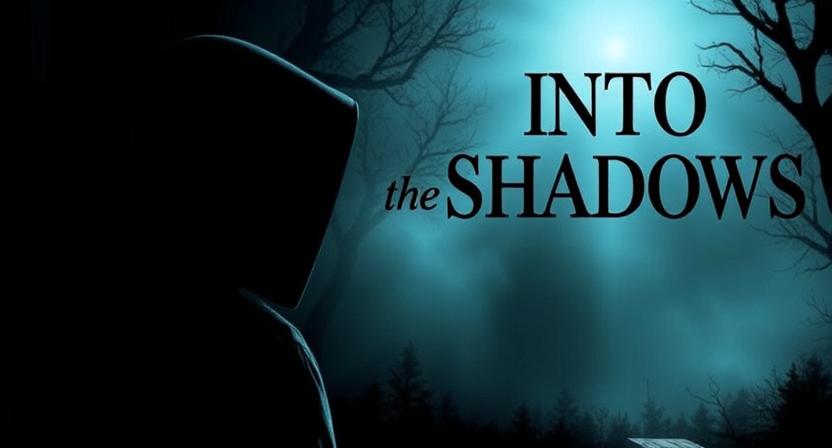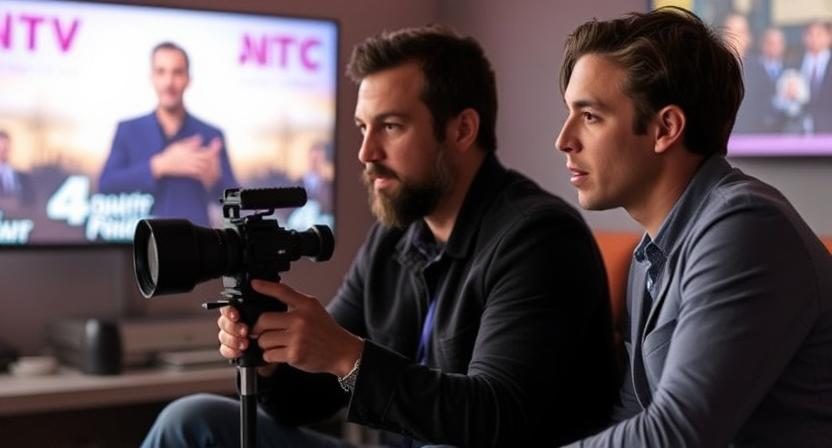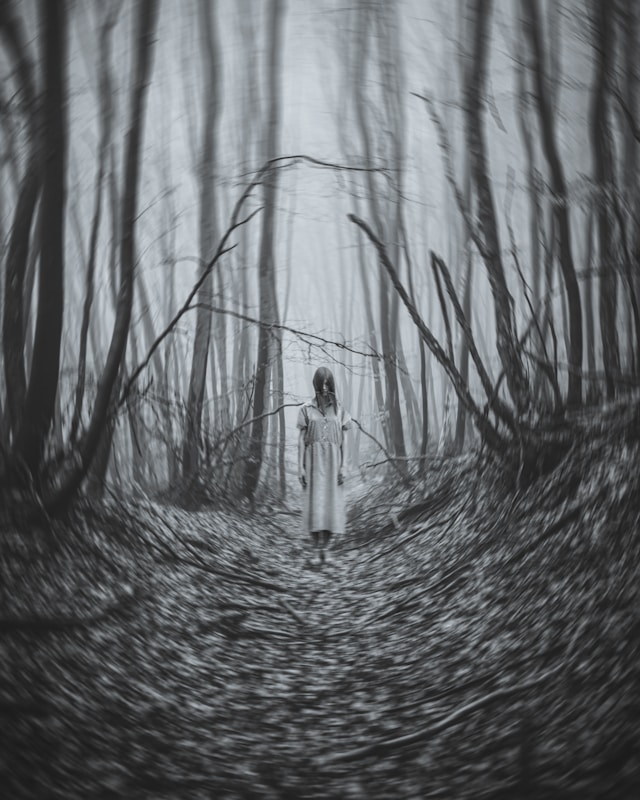Overview of Horror and Supernatural TV Shows
Horror and supernatural TV shows have become staples in the entertainment industry, captivating audiences with their spine-chilling stories and eerie atmospheres. These shows often delve into the unknown, exploring themes of fear, the supernatural, and the macabre. Viewers are drawn to the suspense and thrill that these shows offer, keeping them on the edge of their seats with each episode.
From classic ghost stories to modern psychological thrillers, horror and supernatural TV shows come in various forms and styles, appealing to a wide range of audiences. These shows often showcase unique storytelling techniques, intricate plotlines, and complex characters that keep viewers engaged and intrigued. With the rise of streaming platforms, the popularity of these genres continues to grow, as viewers seek out new and innovative ways to experience the thrill of horror and the supernatural.
• Horror and supernatural TV shows offer spine-chilling stories and eerie atmospheres
• These shows explore themes of fear, the supernatural, and the macabre
• Viewers are drawn to the suspense and thrill that these shows offer
• They come in various forms and styles, appealing to a wide range of audiences
• Unique storytelling techniques, intricate plotlines, and complex characters keep viewers engaged
• The popularity of horror and supernatural TV shows continues to grow with streaming platforms
The Evolution of Horror and Supernatural TV Shows
Horror and supernatural TV shows have undergone a significant transformation over the years, evolving from simple ghost stories and monster tales to complex narratives with layered characters and intricate plotlines. Early shows like “The Twilight Zone” and “The Outer Limits” laid the foundation for the genre, exploring themes of fear, the unknown, and the supernatural in a way that captivated audiences. As television technology advanced, so did the storytelling techniques used in these shows, allowing for more sophisticated visual effects and immersive world-building.
With the rise of streaming platforms and cable networks, the horror and supernatural genre has seen a surge in popularity, leading to a diverse range of shows that push the boundaries of what is considered traditional horror. Series like “American Horror Story” and “Stranger Things” have redefined the genre, blending elements of horror, science fiction, and fantasy to create unique and engaging narratives that resonate with a modern audience. The evolution of these shows reflects a changing cultural landscape, where viewers are drawn to stories that challenge their perceptions of reality and explore the darker aspects of human nature.
• The Twilight Zone and The Outer Limits laid the foundation for horror TV shows
• Early shows explored themes of fear, the unknown, and the supernatural
• Television technology advancements allowed for more sophisticated visual effects
• Streaming platforms and cable networks have led to a surge in popularity for horror and supernatural genre
• American Horror Story and Stranger Things have redefined the genre with unique narratives
• Modern audience is drawn to stories that challenge perceptions of reality
Popular Themes in Horror and Supernatural TV Shows
Horror and supernatural TV shows often explore a variety of popular themes that captivate audiences and keep them on the edge of their seats. One prevalent theme is the concept of good versus evil, where characters are faced with dark forces and must navigate through moral dilemmas. This theme adds layers of complexity to the storytelling and allows for exploration of the complexities of human nature in the face of supernatural threats.
Another common theme in horror and supernatural TV shows is the exploration of the unknown and the supernatural. Viewers are drawn to the mysteries and eerie phenomena that lie beyond the realm of science and logic. The element of the supernatural adds an element of unpredictability and suspense to the narrative, keeping viewers engaged as they try to unravel the secrets of the mysterious forces at play.
• Good versus evil is a prevalent theme in horror and supernatural TV shows
• Characters face dark forces and moral dilemmas
• Adds complexity to storytelling and explores human nature in the face of supernatural threats
• Exploration of the unknown and supernatural is another common theme
• Viewers are drawn to mysteries beyond science and logic
• Element of unpredictability and suspense keeps viewers engaged as they unravel mysterious forces
The Impact of Horror and Supernatural TV Shows on Pop Culture
Horror and supernatural TV shows have had a significant impact on pop culture over the years. These shows have the ability to tap into our deepest fears and desires, providing audiences with a thrill that keeps them coming back for more. From iconic characters to spine-chilling storylines, these shows have become a staple in mainstream media, influencing everything from fashion trends to Halloween costumes.
Not only do horror and supernatural TV shows entertain viewers, but they also spark conversations and debates about themes such as mortality, the afterlife, and the unknown. The popularity of these shows has even led to the creation of fan conventions, online forums, and social media fan pages where enthusiasts can connect and discuss their favorite moments. In a world saturated with content, horror and supernatural TV shows continue to captivate audiences and leave a lasting impact on pop culture.
• Horror and supernatural TV shows tap into our deepest fears and desires
• These shows provide audiences with a thrill that keeps them coming back for more
• Iconic characters and spine-chilling storylines have become a staple in mainstream media
• Themes such as mortality, the afterlife, and the unknown spark conversations and debates
• The popularity of these shows has led to fan conventions, online forums, and social media fan pages where enthusiasts can connect
Analysis of Character Development in Horror and Supernatural TV Shows
Character development in horror and supernatural TV shows plays a crucial role in engaging viewers and immersing them in the stories. The evolution of characters throughout a series can range from complex arcs that add depth and dimension to one-dimensional stereotypes that fulfill specific roles within the narrative. Protagonists often undergo transformation or growth as they face various supernatural threats, while antagonists showcase the darker aspects of human nature or the supernatural entities they embody.
The exploration of character development in these genres allows for a deeper understanding of fear, morality, and the human psyche. Complex relationships between characters, their motivations, and their reactions to the supernatural elements in their world contribute to the overall tension and suspense of the show. Whether through subtle nuances or dramatic transformations, character development adds layers of complexity to the storytelling, making horror and supernatural TV shows not only frightening but also emotionally resonant for audiences.
• Protagonists often undergo transformation or growth as they face various supernatural threats
• Antagonists showcase the darker aspects of human nature or the supernatural entities they embody
• Character development allows for a deeper understanding of fear, morality, and the human psyche
• Complex relationships between characters contribute to tension and suspense in the show
Exploring the Psychological Elements of Horror and Supernatural TV Shows
The psychological elements in horror and supernatural TV shows play a crucial role in captivating audiences and immersing them in a world of fear and suspense. Characters’ fears, traumas, and inner demons are often explored in depth, adding layers of complexity to the storytelling. Viewers are drawn into the psychological struggles of protagonists as they face supernatural entities or navigate terrifying situations. This exploration of the human psyche not only adds depth to the narrative but also resonates with viewers on an emotional level, making the horror and supernatural elements even more impactful.
Furthermore, the psychological elements in these TV shows often serve to mirror real-life anxieties and fears. By tapping into universal themes such as loss, isolation, and the unknown, these shows create a sense of unease that lingers long after the episode ends. Through clever storytelling and character development, horror and supernatural TV shows can provoke introspection and contemplation in viewers, making them confront their own fears and vulnerabilities. This psychological aspect adds a layer of realism to the fictional world, blurring the lines between fantasy and reality in a hauntingly effective manner.
• Characters’ fears, traumas, and inner demons are explored in depth
• Viewers are drawn into the psychological struggles of protagonists
• Exploration of the human psyche adds depth to the narrative
• Psychological elements mirror real-life anxieties and fears
• Shows create a sense of unease that lingers after episodes end
• Provoke introspection and contemplation in viewers
The Role of Sound and Music in Creating Suspense in TV Shows
When it comes to creating suspense in TV shows, sound and music play a crucial role in enhancing the overall atmosphere and tension of a scene. The right choice of sound effects, background music, and silence can build anticipation, evoke fear, and keep viewers on the edge of their seats. From eerie melodies to sudden bursts of noise, the audio elements in horror and supernatural TV shows are carefully crafted to intensify emotions and immerse audiences into the story.
The use of sound and music in TV shows is an art form that requires precision and creativity. The manipulation of sound effects, such as creaking doors, footsteps, or whispers, can amplify the eeriness of a scene and create a sense of dread. In addition, the strategic placement of music cues, whether it’s a subtle orchestral score or a jolting jump scare sound, can heighten the suspense and foreshadow upcoming events. Sound and music work hand in hand to build tension, establish mood, and enhance the overall viewing experience in horror and supernatural TV shows.
• The right choice of sound effects, background music, and silence can build anticipation
• Eerie melodies and sudden bursts of noise intensify emotions
• Manipulation of sound effects like creaking doors and whispers amplify eeriness
• Strategic placement of music cues heighten suspense and foreshadow events
Comparing Horror and Supernatural TV Shows to Other Genres
One key aspect that sets horror and supernatural TV shows apart from other genres is their ability to evoke fear and suspense in viewers. While dramas and comedies aim to entertain and engage audiences through storytelling and character development, horror and supernatural shows focus on creating tension and unease through chilling narratives and paranormal elements. The use of eerie settings, dark cinematography, and unsettling soundtracks play a crucial role in intensifying the overall atmosphere of these shows, drawing viewers into a world filled with mystery and the unknown.
Moreover, unlike genres that primarily rely on logical explanations and realism, horror and supernatural TV shows often delve into the realm of the supernatural, exploring themes of the occult, folklore, and mythical creatures. This departure from conventional storytelling allows these shows to push boundaries and challenge traditional narrative structures, captivating audiences with tales of ghosts, monsters, and otherworldly phenomena. By weaving elements of the supernatural into their plots, these shows offer a unique viewing experience that transports viewers to a realm where the impossible becomes possible, blurring the lines between reality and the supernatural.
• Horror and supernatural TV shows focus on creating tension and unease through chilling narratives and paranormal elements
• Eerie settings, dark cinematography, and unsettling soundtracks intensify the overall atmosphere of these shows
• These genres explore themes of the occult, folklore, and mythical creatures
• They push boundaries and challenge traditional narrative structures by delving into the realm of the supernatural
• By weaving elements of the supernatural into their plots, these shows offer a unique viewing experience that blurs the lines between reality and the supernatural.
The Influence of Literature on Horror and Supernatural TV Shows
Literature has always been a rich source of inspiration for horror and supernatural TV shows. Classic novels and short stories have provided a treasure trove of ideas for creators to adapt and reimagine on the small screen. From Bram Stoker’s “Dracula” to Mary Shelley’s “Frankenstein,” these timeless literary works have served as the foundation for many beloved television series, offering a blend of suspense, mystery, and the macabre that captivates audiences worldwide.
Authors such as Edgar Allan Poe, H.P. Lovecraft, and Stephen King have also made significant contributions to the realm of horror literature, influencing the development of numerous TV shows in the genre. Their dark and unsettling narratives have shaped the way we perceive fear and the supernatural, inspiring TV creators to delve into the depths of human psyche and explore the unknown. The visceral impact of these literary masterpieces continues to resonate with viewers, drawing them into a world where the boundaries between reality and fiction blur in hauntingly captivating ways.
• Classic novels and short stories provide inspiration for horror and supernatural TV shows
• Authors like Edgar Allan Poe, H.P. Lovecraft, and Stephen King have influenced the genre
• Literary works offer suspense, mystery, and macabre elements that captivate audiences
• TV creators delve into human psyche and explore the unknown inspired by dark narratives
Examining the Use of Special Effects in Horror and Supernatural TV Shows
Special effects play a crucial role in enhancing the overall eerie and supernatural atmosphere in horror and supernatural TV shows. From realistic-looking monsters to spine-chilling ghostly apparitions, special effects help bring the fantastical elements of these shows to life. The use of CGI, practical effects, and makeup create a visual spectacle that captivates viewers and immerses them in the otherworldly realms depicted on screen.
In addition to creating visually stunning moments, special effects in horror and supernatural TV shows also serve to elevate the suspense and tension that are essential to the genre. Whether it’s a sudden jump scare or a gradual reveal of a horrifying creature, the strategic use of special effects heightens the viewer’s sense of unease and anticipation. By masterfully blending practical effects with CGI technology, these shows are able to instill a sense of dread and excitement in audiences, making the viewing experience truly immersive and unforgettable.
• Special effects enhance the eerie and supernatural atmosphere in horror and supernatural TV shows
• CGI, practical effects, and makeup bring fantastical elements to life on screen
• Visual spectacle captivates viewers and immerses them in otherworldly realms depicted
• Special effects elevate suspense and tension essential to the genre
• Strategic use of special effects heightens viewer’s sense of unease and anticipation
• Blend of practical effects with CGI technology instills dread and excitement in audiences
The Importance of Setting in Creating a Spooky Atmosphere in TV Shows
Setting plays a crucial role in setting the tone and atmosphere of horror and supernatural TV shows. The choice of location, whether it’s a haunted house, a dark forest, or an abandoned asylum, can evoke a sense of unease and foreboding in viewers. The details within the setting, such as dim lighting, creaking floorboards, and eerie shadows, contribute to creating a spooky ambiance that keeps viewers on the edge of their seats.
Moreover, the setting can act as a character in itself, influencing the actions of the main characters and adding depth to the storyline. A well-crafted setting can enhance the storytelling by immersing the audience into a world where the supernatural feels tangible and the horrors feel all too real. From isolated cabins in the woods to ancient castles shrouded in mist, the setting is a powerful tool in building suspense and enhancing the overall chilling experience for viewers of horror and supernatural TV shows.
• The choice of location, whether it’s a haunted house, a dark forest, or an abandoned asylum, can evoke a sense of unease and foreboding in viewers.
• Details within the setting, such as dim lighting, creaking floorboards, and eerie shadows, contribute to creating a spooky ambiance.
• The setting can act as a character itself, influencing the actions of main characters and adding depth to the storyline.
• A well-crafted setting can enhance storytelling by immersing the audience into a world where supernatural feels tangible.
• From isolated cabins in the woods to ancient castles shrouded in mist, settings are powerful tools in building suspense for viewers.
The Rise of Anthology Series in Horror and Supernatural TV Shows
Anthology series have become increasingly popular in the realm of horror and supernatural TV shows. This format allows for a diverse range of standalone stories to be told within a single season, catering to viewers’ desire for variety and unpredictability. Each episode presents a new narrative with fresh characters and settings, keeping audiences engaged and intrigued throughout the season.
The rise of anthology series has provided creators with a unique platform to explore different subgenres and themes within the horror and supernatural genres. From psychological thrillers to ghost stories to gory slasher tales, anthology series offer a wide spectrum of storytelling possibilities that cater to a variety of tastes. This format also allows for experimentation with narrative structures and visual styles, pushing the boundaries of traditional storytelling in TV shows.
• Anthology series have become increasingly popular in the realm of horror and supernatural TV shows.
• This format allows for a diverse range of standalone stories to be told within a single season, catering to viewers’ desire for variety and unpredictability.
• Each episode presents a new narrative with fresh characters and settings, keeping audiences engaged and intrigued throughout the season.
• The rise of anthology series has provided creators with a unique platform to explore different subgenres and themes within the horror and supernatural genres.
• From psychological thrillers to ghost stories to gory slasher tales, anthology series offer a wide spectrum of storytelling possibilities that cater to a variety of tastes.
• This format also allows for experimentation with narrative structures and visual styles, pushing the boundaries of traditional storytelling in TV shows.
The Representation of Women in Horror and Supernatural TV Shows
In many horror and supernatural TV shows, the representation of women has evolved over the years. Traditionally, women in these genres were often portrayed as victims or damsels in distress, who needed to be saved by male protagonists. However, there has been a shift towards more empowered and complex female characters in recent years. These women are depicted as strong, resourceful, and capable of facing the supernatural forces on their own terms.
Moreover, the representation of women in horror and supernatural TV shows has also diversified to include a range of identities and experiences. Female characters now come from various backgrounds, with different motivations, strengths, and weaknesses. This diversity adds depth and richness to the storytelling, offering a more nuanced and inclusive portrayal of women in these genres. By breaking away from traditional stereotypes, these shows are showcasing the complexity and resilience of women in the face of supernatural challenges.
• Women in horror and supernatural TV shows are no longer just victims or damsels in distress
• They are now portrayed as strong, resourceful, and capable of facing supernatural forces on their own terms
• Female characters come from various backgrounds with different motivations, strengths, and weaknesses
• This diversity adds depth and richness to the storytelling
• These shows offer a more nuanced and inclusive portrayal of women in these genres
The Connection Between Horror and Supernatural TV Shows and Real-Life Events
Horror and supernatural TV shows often draw inspiration from real-life events to add an element of authenticity and relatability to their storylines. By incorporating elements from history, urban legends, and paranormal experiences, these shows blur the line between fiction and reality, creating a sense of unease and intrigue for viewers. The connection between these TV shows and real-life events not only adds depth to the narratives but also serves as a reflection of society’s fears and anxieties, tapping into universal themes that resonate with audiences on a visceral level.
From haunted houses to demonic possessions, horror and supernatural TV shows take cues from documented cases of paranormal activity and mysterious phenomena that have captivated people for generations. By weaving these real-life events into their storytelling, the shows create a sense of familiarity and plausibility that heightens the suspense and fear factor. This connection also allows viewers to engage with the content on a more personal level, as they may recognize elements or themes that mirror their own beliefs, experiences, or fears.
• The use of real-life events in horror and supernatural TV shows adds authenticity and relatability to the storylines.
• Incorporating elements from history, urban legends, and paranormal experiences blurs the line between fiction and reality for viewers.
• By tapping into universal fears and anxieties, these shows create a sense of unease and intrigue that resonates with audiences on a visceral level.
• Documented cases of paranormal activity inspire storylines about haunted houses, demonic possessions, and mysterious phenomena in TV shows.
• Weaving real-life events into storytelling creates familiarity and plausibility that heightens suspense for viewers.
Exploring Different Subgenres within Horror and Supernatural TV Shows
Horror and supernatural TV shows encompass a wide variety of subgenres that cater to different tastes and preferences within the genre. From psychological horror to supernatural thrillers, each subgenre offers a unique take on fear and the supernatural. Psychological horror focuses on the mind and the psychological aspects of fear, often delving into the depths of human psychology to unsettle viewers. It plays with the audience’s perception and emotions, creating a sense of unease and tension that lingers long after the episode ends.
Supernatural thrillers, on the other hand, blend elements of the supernatural with a thrilling narrative, incorporating ghosts, demons, and otherworldly beings to keep viewers on the edge of their seats. These shows often explore the unknown and delve into the realms of the supernatural, weaving complex storylines that intermingle with supernatural elements. The wide range of subgenres within horror and supernatural TV shows ensures that there is something for every viewer, catering to diverse preferences and providing a rich tapestry of fear and intrigue to explore.
• Psychological horror focuses on the mind and psychological aspects of fear
• Plays with audience’s perception and emotions to create unease and tension
• Supernatural thrillers blend supernatural elements with thrilling narratives
• Incorporate ghosts, demons, and otherworldly beings to keep viewers engaged
• Explore the unknown and delve into realms of the supernatural
• Offer a wide range of subgenres within horror and supernatural TV shows for diverse preferences
The Art of Building Tension and Pacing in TV Shows
Creating tension and maintaining a gripping pace are essential elements in crafting captivating TV shows, particularly in the horror and supernatural genres. The ability to keep viewers on the edge of their seats while gradually unfolding the story is a skill that sets these shows apart. By judiciously revealing twists and turns at just the right moment, writers and directors can effectively build suspense and engage the audience’s emotions.
The strategic placement of cliffhangers, unexpected plot twists, and moments of heightened intensity all contribute to the overall tension and pacing of a TV show. These elements serve to keep viewers invested in the story, eager to uncover what will happen next. Additionally, the use of atmospheric cues, such as lighting, sound effects, and soundtrack, further heighten the sense of unease and anticipation, enhancing the overall viewing experience.
• Cliffhangers are a powerful tool to keep viewers hooked and eagerly awaiting the next episode.
• Unexpected plot twists can shock and surprise audiences, adding layers of complexity to the narrative.
• Moments of heightened intensity create a sense of urgency and excitement, driving the story forward.
• Atmospheric cues such as lighting, sound effects, and soundtrack help set the mood and create tension in key scenes.
The Role of Mythology and Folklore in Horror and Supernatural TV Shows
Mythology and folklore play a crucial role in shaping the narratives of horror and supernatural TV shows. These ancient tales and legends provide a rich tapestry of supernatural beings, magical realms, and moral dilemmas that serve as the backbone for many intriguing storylines. By drawing upon the vast and diverse pool of myths and folklore from various cultures around the world, TV show creators can tap into a deep well of inspiration to craft compelling and chilling narratives that captivate audiences.
Whether it’s delving into the eerie folklore of haunted forests or exploring the dark depths of ancient myths about vengeful spirits, the incorporation of mythology and folklore adds layers of depth and authenticity to horror and supernatural TV shows. By intertwining these age-old stories with modern settings and characters, creators can create a sense of familiarity and intrigue that keeps viewers hooked and eagerly awaiting each new episode. By tapping into the universal themes and archetypes found in mythology and folklore, TV shows in this genre can resonate with audiences on a primal level, appealing to our shared fascination with the unknown and the supernatural.
• Mythology and folklore provide a rich tapestry of supernatural beings and magical realms
• These ancient tales serve as the backbone for intriguing storylines in horror and supernatural TV shows
• By drawing upon myths from various cultures, creators can craft compelling narratives that captivate audiences
• The incorporation of mythology adds layers of depth and authenticity to TV shows in this genre
• Intertwining age-old stories with modern settings creates familiarity and intrigue for viewers
The Appeal of Horror and Supernatural TV Shows to Different Audiences
Horror and supernatural TV shows have a broad appeal to audiences of all ages, genders, and backgrounds. The thrill of being scared and the adrenaline rush that comes with watching these shows captivate viewers. For many, these shows provide an escape from reality and offer a sense of excitement and suspense that is hard to find in other genres. The element of the unknown and the supernatural aspects also draw in those who are intrigued by the paranormal and mysterious.
Additionally, horror and supernatural TV shows often explore deeper themes and universal fears that resonate with a wide range of viewers. The examination of human psyche, morality, and the existence of the supernatural taps into the innate curiosity and fascination of the audience. Furthermore, the complexity of characters and the intricate storylines in these shows provide a sense of depth and engagement that keeps viewers hooked. Ultimately, the appeal of horror and supernatural TV shows lies in their ability to entertain, provoke thought, and evoke a range of emotions in audiences worldwide.
• The thrill of being scared and the adrenaline rush captivate viewers
• Provides an escape from reality and offers excitement and suspense
• Draws in those intrigued by the paranormal and mysterious
• Explores deeper themes and universal fears that resonate with viewers
• Examines human psyche, morality, and existence of the supernatural
• Complexity of characters and intricate storylines keep viewers engaged
• Ability to entertain, provoke thought, and evoke a range of emotions in audiences worldwide
The Future of Horror and Supernatural TV Shows
Looking ahead, the future of horror and supernatural TV shows appears promising. With advancements in technology, creators have more tools at their disposal to craft visually stunning and immersive experiences for viewers. Additionally, there is a growing demand for diverse representation in media, leading to more inclusive and culturally-rich storytelling within the horror and supernatural genres.
As streaming platforms continue to gain popularity, we can expect to see a surge in original horror and supernatural content catering to niche audiences. This shift allows for greater creative freedom and experimentation within the genre, paving the way for innovative narratives and fresh perspectives to captivate viewers. Overall, the future of horror and supernatural TV shows seems bright, promising an exciting and dynamic landscape for both creators and audiences alike.
– Streaming platforms will lead to a surge in original horror and supernatural content
– Greater creative freedom and experimentation within the genre
– More inclusive and culturally-rich storytelling
– Advancements in technology will allow for visually stunning and immersive experiences
Conclusion: Reflecting on the Enduring
In conclusion, the enduring popularity of horror and supernatural TV shows can be attributed to their ability to tap into deep-seated fears and desires that are inherent in human nature. By exploring themes of the unknown, the supernatural, and the macabre, these shows provide viewers with a thrilling escape from reality while also offering a safe space to confront their own anxieties. The evolution of these genres over the years has demonstrated a shift towards more complex storytelling, well-developed characters, and sophisticated visual effects, which have further cemented their place in the world of television entertainment.
• Horror and supernatural TV shows tap into deep-seated fears and desires
• Themes of the unknown, supernatural, and macabre provide thrilling escape from reality
• Viewers can confront their anxieties in a safe space while watching these shows
• Evolution of genres has led to more complex storytelling, well-developed characters, and sophisticated visual effects




